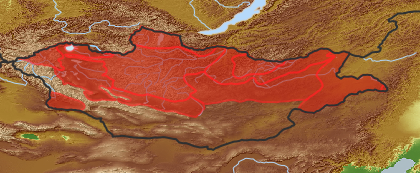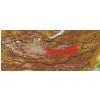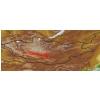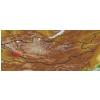| Class: | angiosperms |
| Order: | Lamiales |
| Family: | Lentibulariaceae |
| Genus: | Utricularia |
| Scientific name: | Utricularia vulgaris L. |
| Name acc. to: | Gubanov 1996 |
| Herbar: | list records  |
| Description: | Stem up to 1m long. Trap bladders located on all green leaves radially arranged on stem. Leaves 1.5-5 cm long, with ciliate linear lobes; bladders 3-4 mm long. Bracts ovate. Flowers large, 12-20 mm in diameter, palate hairy, lower lip weakly trilobate, margins of lower corolla lip deflexed, with thin 7-9 mm long spur. |
| Confuse with: | vegetative difficult to distinguish from U. australis |
| Link to Flora of China: | http://www.efloras.org/browse.aspx?flora_id=2&name_str=Utricularia+vulgaris |
| open map in a new window |  |
| Habitat: | Shallow waters of lakes, old river beds, backwaters, small bogs (Grubov 2001). |
| Habit (i)general appearance of a plant | |
| Growth form: (i)Herb, shrub, tree or climber. | herb (i)Herbaceous, erect plant, up to 2m high, mostly with a leafy shoot; if perennial, shoots die to the ground each season, shoots are not woody
example: Artemisia pectinata 
perennial (i)Living for several to many years, as opposed to annual and biennial
acc. to: FoC online |
| Parasite status: (i)Is the plant a half- or full parasite? | no parasite/saprophyte (i)Plant fully autonomous, leaves with chlorophyll
example: Most plants, Ranunculus  inherited by family Lentibulariaceae: no parasite/saprophyte inherited by family Lentibulariaceae: no parasite/saprophyte
|
| Water or terrestrial plant: (i)Where do the plants grow? | water or swamp plant  inherited by family Lentibulariaceae: water or swamp plant inherited by family Lentibulariaceae: water or swamp plant
|
| Leaf (i)expanded, usually photosynthetic organ of a plant (including phylloclades) | |
| Leaf veination: (i)Arrangement of the main veins of a leaf. | pinnate (i)One main vein, several side veins, sometimes inconspicuous
example: Cicerbita     inherited by family Lentibulariaceae: pinnate inherited by family Lentibulariaceae: pinnate
|
| Root / shoot below ground (i)plant part below ground (in most cases), including below ground shoots, without leaves | |
| Root type: (i)Organisation of the roots. | allorhizous (i)Plant with a conspicuous tap root, one larger tap root with side roots
example: Dicotyledonae  inherited by order Lamiales: allorhizous inherited by order Lamiales: allorhizous
|
| Distribution (i)region where the plant is likely to be found | |
| Distribution (Veg. Zones): (i)acc. to Grubov 1952 | Khubsgul (i)In distribution data often named as '1' 
Khentei (i)In distribution data often named as '2' 
Khangai (i)In distribution data often named as '3' 
Mongol-Daurian (i)In distribution data often named as '4' 
Great Khingan (i)In distribution data often named as '5' 
Khobdo (i)In distribution data often named as '6' 
Middle Khalkha (i)In distribution data often named as '8' 
East Mongolia (i)In distribution data often named as '9' 
Depression of Great Lakes (i)In distribution data often named as '10' 
Valley of Lakes (i)In distribution data often named as '11' 
Dzungarian Gobi (i)In distribution data often named as '14' 
acc. to: Gubanov 1996 |
| Distribution Khangay: (i)acc. Flora Khangaya 1989 | I
IV
V
|